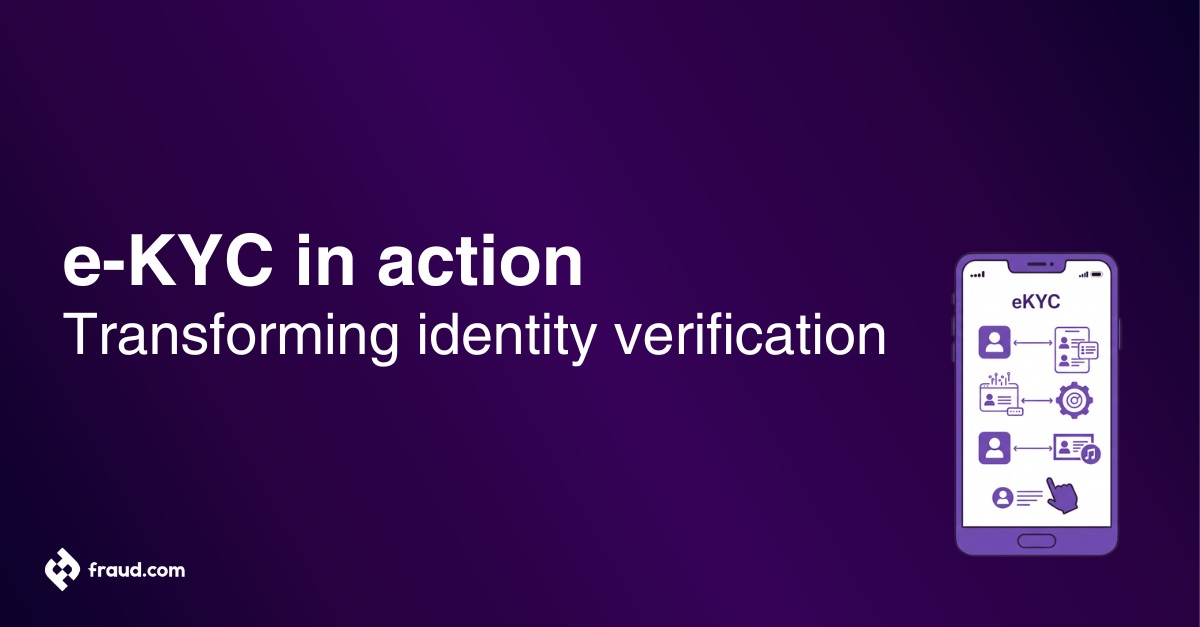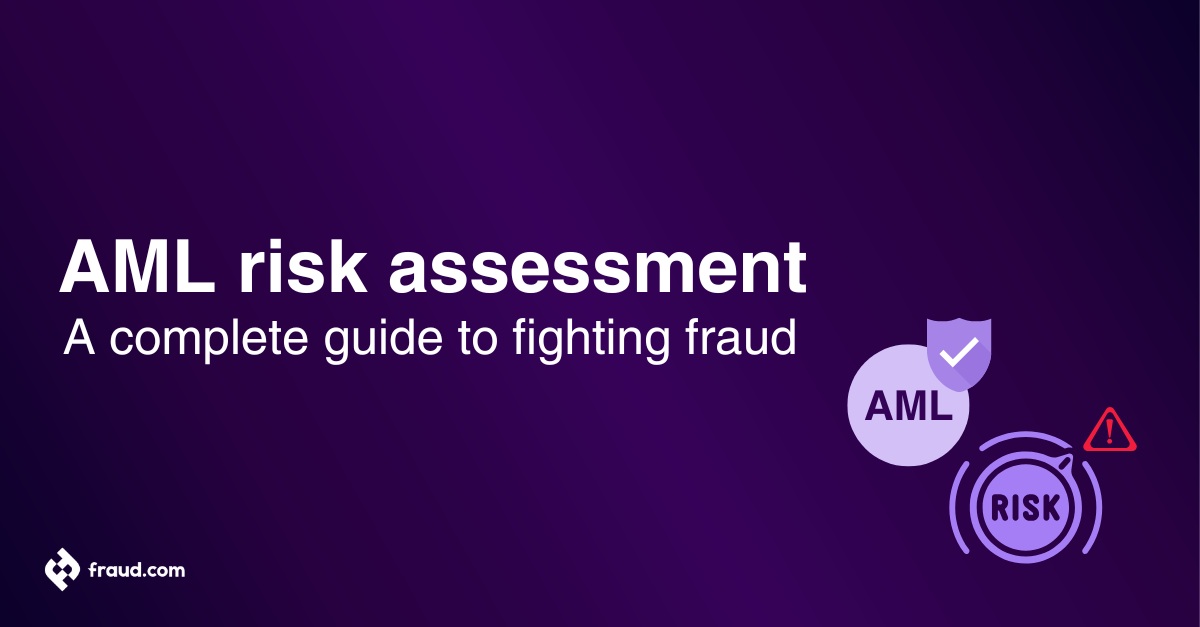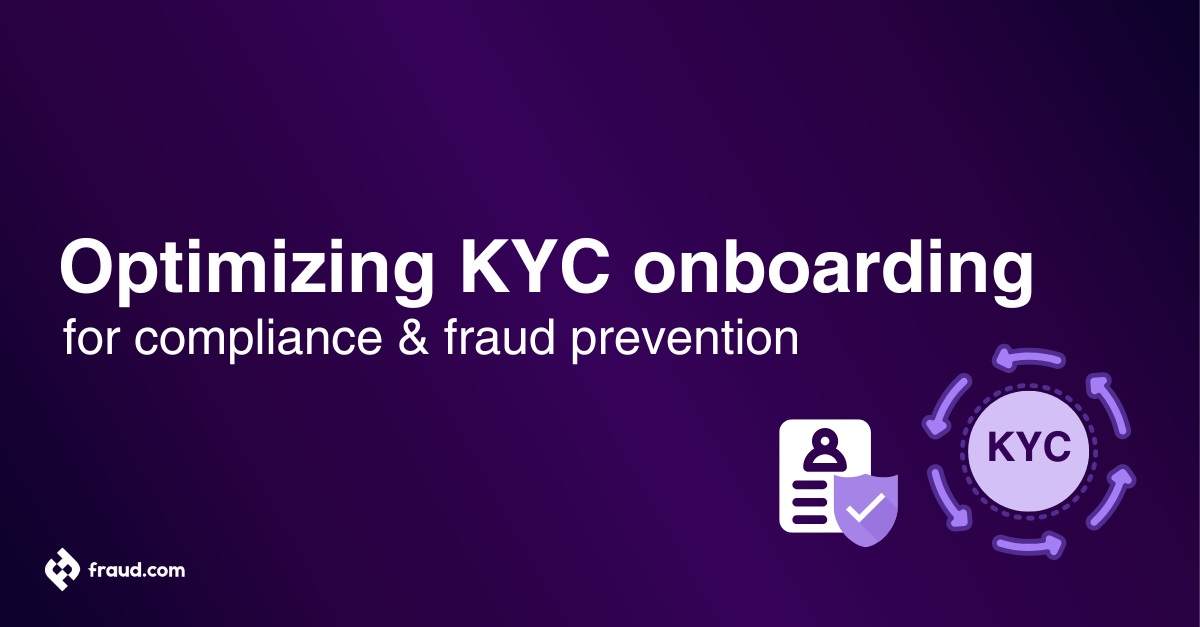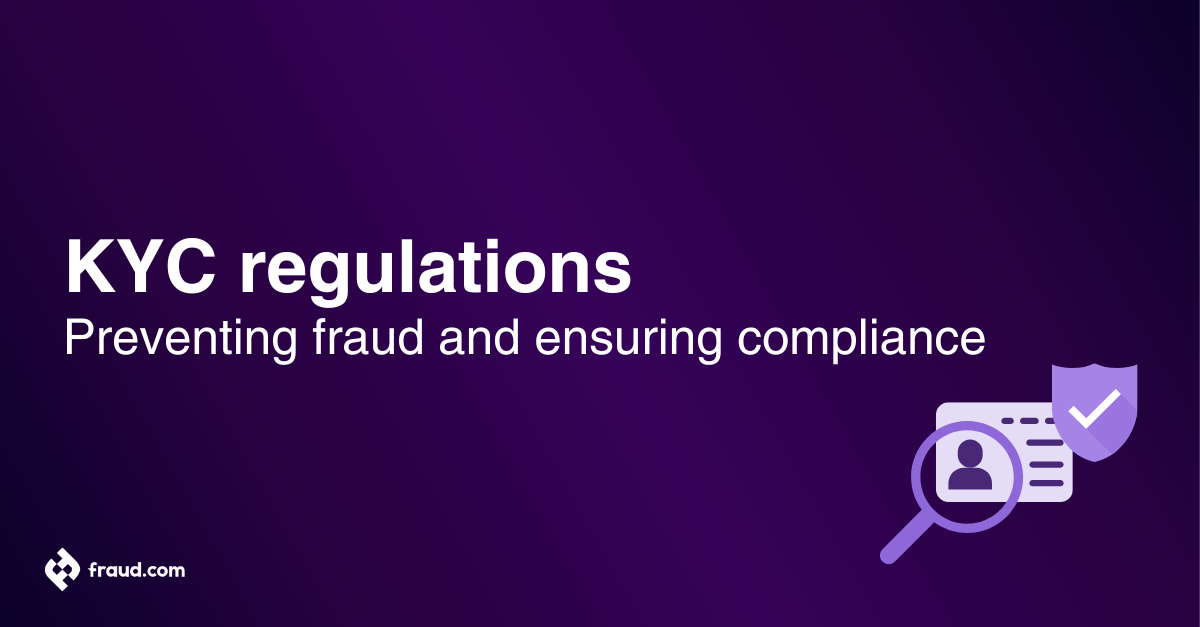In today’s world, we often hear about “money laundering” and the efforts to combat it through Anti-Money Laundering (AML) practices. But what exactly does AML entail, and why does it matter so much?
In recent years, money laundering has become an increasingly global phenomenon, with fraudster and criminal organisations using ever-more sophisticated methods to move and conceal their funds. As a result, the fight against money laundering has become a top priority for law enforcement, financial regulators and other organisations worldwide.
This article aims to demystify Anti-Money Laundering in a clear and relatable manner. We’ll explore the basics of AML, uncovering its inner workings and objectives, all while emphasizing why it’s crucial for everyone to understand its significance. From financial institutions to regulatory bodies and everyday individuals, AML efforts touch us all, contributing to the integrity of our financial systems and the safety of our communities.
So, let’s embark on this journey together as we delve into the world of Anti-Money Laundering, exploring its role in fighting financial crime, fraud and protecting the foundation of our economy.
Table of Contents
ToggleWhat Is Anti-Money Laundering (AML)?
Anti-Money Laundering (AML) refers to a set of laws, regulations, and procedures designed to prevent and detect the illegal conversion of funds obtained through criminal activities into legitimate assets. At its core, AML aims to disrupt the financial aspects of fraudulent and criminal enterprises, thereby reducing the incentive for illegal activities such as drug trafficking, terrorism financing, corruption, and fraud.
Key components of AML include Customer Due Diligence (CDD), Know Your Customer (KYC), transaction monitoring, suspicious activity reporting, and record-keeping requirements. Financial institutions, including banks, credit unions, brokerages, and money service businesses, are mandated to implement robust AML programs to identify and mitigate the risks associated with money laundering and terrorist financing.
By implementing AML measures, financial institutions can verify the identities of their customers, monitor their transactions for unusual patterns indicative of illicit activity, and report suspicious transactions to the appropriate authorities. Additionally, AML regulations often require institutions to maintain comprehensive records of their customers and transactions, enabling them to provide information to law enforcement agencies upon request.
What is the goal of AML?
Overall, the primary goal of Anti-Money Laundering efforts is to safeguard the integrity of the financial system, protect businesses and individuals from financial crime, financial fraud, and uphold the rule of law. Through collaborative efforts between financial institutions, regulators, and law enforcement agencies, AML plays a critical role in combating illicit financial activities and preserving the stability and trustworthiness of the global economy.
Anti-money laundering (AML) laws and regulations prevent criminal organisations from using the financial system to launder their ill-gotten funds. These laws typically place many requirements on financial institutions, such as banks, to help detect and report suspicious activity.
In the UK, the primary AML legislation is the Proceeds of Crime Act 2002 (POCA) by the Parliament of the UK. Giving the power to seize any funds derived for or intended to use in crime.
In the case of the United States, the main AML law is the Bank Secrecy Act (BSA) of 1970. The BSA requires financial institutions to maintain records of their customers’ transactions and report any suspicious activity to the Financial Crimes Enforcement Network (FinCEN), a division of the US Department of the Treasury.
Other jurisdictions have similar laws in place. For example, the European Union has the Directives on Money Laundering, which requires financial institutions to take measures to prevent money laundering, including customer due diligence and reporting of suspicious activity.
Understanding Anti-Money Laundering (AML)
It is important to understand that AML is not designed to criminalise money laundering itself. Instead, it is designed to make it more difficult for criminals to launder money by making it easier for authorities to detect and trace suspicious activity.
To comply with AML regulations, financial institutions must put in place some processes and procedures, such as:
Know Your Customer
Whenever you read about Know Your Customer (KYC) in the context of financial regulations, it refers to Know Your Customer rules. Financial institutions must take steps to verify the identity of their customers and understand their risk profile. That typically includes collecting customer information such as name, address, date of birth, and identification documents.
KYC requirements vary depending on the jurisdiction, but financial institutions must take reasonable steps to ensure that their customers are who they say they are and are not engaged in illegal activity. A clear example of this measure relates to the cryptocurrency industry, which has struggled to comply with KYC regulations due to the anonymous nature of digital currencies and other crypto assets.
Cryptocurrency exchanges are now forced to implement know-your-customer (KYC) checks. These checks typically require customers to provide their personal information and submit documents such as a passport or driver’s license for identity verification.
Customer Due Diligence (CDD)
Customer Due Diligence (CDD) is a process that financial institutions must use to identify and assess the risks posed by their customers’ proposed transactions. While KYC mainly focuses on identifying the customer during their account creation, CDD is an ongoing process that must be conducted throughout the customer relationship.
The specific requirements of CDD vary depending on the jurisdiction, but in general, financial institutions must take steps to understand their customer’s business, including their ownership structure, sources of funds, and typical transactions. This information must then be used to assess the customer’s risk profile and determine whether their proposed transaction is suspicious.
Suppose a financial institution suspects that a customer’s transaction may be related to money laundering, terrorist financing, or other criminal activity including fraud. In that case, they must file a suspicious activity report (SAR) with the relevant authorities. Note that Politically Exposed Persons (PEPs) are considered to pose a higher risk and therefore require enhanced due diligence.
Why is anti-money laundering important?
Anti-money laundering (AML) is crucial because it helps to prevent criminals from using the financial sector to launder money. From drug trafficking to terrorist financing, money laundering is a significant problem that can seriously affect global security.
By implementing AML measures, financial institutions and other businesses can help to make it more difficult for criminals to launder money. This, in turn, can help make the world a safer place for financial uses and overall.
From a business standpoint, complying with AML regulations can also help to protect a company from reputational damage and financial losses. In some cases, failure to comply with AML regulations can result in hefty fines and even prison sentences.
How does Anti-Money Laundering work?
The working logic of AML compliance works similarly for all countries. After a customer is deemed high-risk, their transactions are continuously monitored for irregularities. They might be placed on a sanctions list or have their transactions blocked if anything suspicious is found. Financial institutions are also legally required to share any information that could be used in an investigation.
This process is typically done through a risk-based approach powered by Artificial Intelligence (AI) and Machine Learning (ML). AI and ML help assess customer risk, automatically screen transactions, and monitor suspicious activity. It’s a huge shift from the traditional compliance model, which is rules-based and very manual, which always creates the question whether fraud rule engines are a thing of the past.
This model is not only inefficient but is also prone to human error. With the new risk-based approach, the working principle of anti-money laundering compliance is much more effective and efficient.
What are the stages of AML?
Understanding the journey of Anti-Money Laundering (AML) involves recognizing its distinct stages, each pivotal in combating financial crime. Here’s a breakdown of these crucial stages:
- Initiation and identification: The AML journey kicks off with the initiation of a customer relationship. Here, financial institutions employ robust Know Your Customer (KYC) protocols to verify the identity of customers, ensuring they meet regulatory requirements.
- Risk profiling: Following identification, institutions assess the risk associated with each customer. Factors such as geographic location, transaction patterns, and business activities are scrutinized to determine the level of risk posed by the customer.
- Enhanced Due Diligence (EDD): For customers deemed high-risk during the risk profiling stage, Enhanced Due Diligence (EDD) measures are implemented. This involves gathering additional information and conducting more thorough scrutiny to mitigate potential risks.
- Transaction surveillance: AML systems continuously monitor customer transactions in real-time. This stage involves the use of sophisticated algorithms to detect unusual patterns or behaviours via processes such as fraud risk scoring, indicative of money laundering or other illicit and fraudulent activities.
- Investigation and analysis: Upon detecting suspicious activity, institutions conduct detailed investigations to analyze the nature and source of the transactions. This stage is crucial for determining the legitimacy of the activity and deciding whether to file a Suspicious Activity Report (SAR).
- Reporting and compliance: Compliance issues are on the rise and when warranted, institutions file SARs with the appropriate regulatory authorities, providing detailed information about the suspicious activity. Compliance with reporting requirements is essential to facilitate law enforcement investigations and uphold regulatory standards.
- Documentation and audit: Throughout the AML journey, meticulous documentation of customer interactions and due diligence processes is maintained. These records serve as evidence of compliance and are subject to audit by regulatory authorities.
- Training and continuous improvement: Ongoing training programs ensure staff members remain up-to-date with AML regulations and best practices. Institutions also engage in continuous improvement efforts to enhance the effectiveness of their AML programs.
By navigating through these stages effectively, financial institutions strengthen their defences against money laundering, contributing to the integrity and stability of the global financial system.
Process of AML & KYC
The process of Anti-Money Laundering (AML) and Know Your Customer (KYC) represents a comprehensive and systematic approach and framework adopted by financial institutions to mitigate the risks associated with money laundering and terrorist financing while ensuring compliance with regulatory requirements. The following aspects are all part of this process:
- Customer identification (KYC): At the onset of any financial relationship, institutions conduct thorough customer identification processes. This involves collecting pertinent information, including but not limited to name, address, date of birth, and official identification documents, to verify the identity of customers.
- Risk assessment: Financial institutions evaluate the risk associated with each customer based on various factors such as their geographic location, occupation, transaction history, and the nature of their business activities. This risk-based approach helps determine the level of due diligence required for each customer.
- Customer Due Diligence (CDD): This step step involves verifying the identity of customers to establish a level of confidence while complying with identity verification regulations. As part of KYC procedures, institutions conduct Customer Due Diligence (CDD) to gain a deeper understanding of their customers’ financial behavior. This entails gathering additional information and scrutinizing transactions to identify any anomalies or red flags that may indicate potential money laundering or illicit activities.
- Transaction monitoring: KYC and AML processes, especially in the banking sector, require ongoing monitoring. AML systems are employed to monitor customer transactions in real-time. Sophisticated algorithms and filters are used to detect unusual patterns or behaviors, triggering alerts for further investigation. Transaction monitoring is essential for identifying suspicious activities and ensuring timely reporting to regulatory authorities.
- Suspicious Activity Reporting (SAR): When suspicious transactions are identified through transaction monitoring or CDD processes, institutions are obligated to file Suspicious Activity Reports (SARs) with the relevant regulatory bodies. SARs provide detailed information about the suspicious activity and play a crucial role in facilitating law enforcement investigations.
- Record-keeping: AML and KYC regulations mandate financial institutions to maintain comprehensive records of customer interactions, including identification documents, transaction history, and due diligence processes. These records serve as evidence of compliance and are subject to audit by regulatory authorities.
- Compliance training and monitoring: To ensure adherence to AML and KYC requirements, institutions provide ongoing training to staff members involved in customer interactions. Compliance monitoring mechanisms are also put in place to assess the effectiveness of AML/KYC processes and identify areas for improvement.
By implementing robust AML and KYC processes, financial institutions can mitigate the risks associated with money laundering and terrorist financing while promoting the integrity and stability of the financial system. These processes not only protect institutions from regulatory scrutiny and reputational damage but also contribute to broader efforts to combat financial crime on a global scale.
What’s the Difference Between AML, CDD, and KYC?
A number of terms are often used interchangeably when it comes to anti-money laundering (AML). However, it is important to understand the difference between these terms. In short:
- AML (Anti-Money Laundering): Encompasses all measures used to prevent money laundering.
- KYC (Know Your Customer): Specific AML procedure focusing on verifying customer identities and assessing their risk levels.
- CDD (Customer Due Diligence): Another specific AML procedure involving thorough assessment of customers’ backgrounds and risks.
In other words, while all businesses required to comply with AML regulations must have KYC and CDD procedures in place, there are additional AML measures they may need to take, such as filing suspicious activity reports (SARs).
AML risk assessment
The AML risk assessment process is fundamental in identifying, evaluating, and mitigating the risks associated with money laundering and terrorist financing. Here’s an overview of this critical component:
- Identification of risks: Financial institutions identify and assess the various risks associated with their business activities, including customer profiles, geographic locations, products, and services offered. This involves analyzing factors such as transaction volumes, complexity, and potential exposure to illicit activities.
- Risk categorization: Risks are categorized based on their likelihood and potential impact. High-risk factors may include dealing with Politically Exposed Persons (PEPs), operating in jurisdictions with weak AML regulations, or offering high-value products or services susceptible to abuse.
- Risk scoring: Each risk category is assigned a score based on the severity of the risk and the institution’s exposure. Risk scoring methodologies may vary but commonly involve assigning numerical values or qualitative assessments to different risk factors.
- Risk mitigation strategies: Once risks are identified and scored, financial institutions develop risk mitigation strategies to address and manage these risks effectively. This may involve implementing enhanced due diligence measures for high-risk customers, enhancing transaction monitoring systems, or strengthening internal controls.
- Ongoing monitoring and review: AML risk assessments are not static but require continuous monitoring and review to adapt to evolving threats and regulatory changes. Institutions regularly reassess their risk profiles, adjust risk mitigation strategies as necessary, and ensure compliance with regulatory requirements.
- Documentation and reporting: Comprehensive documentation of the risk assessment process is essential to demonstrate compliance with regulatory expectations. Financial institutions maintain records of risk assessments, including methodologies used, findings, and actions taken to mitigate identified risks.
- Integration with AML program: The AML risk assessment process is integral to the overall AML program of financial institutions. It informs the development of policies, procedures, and controls to effectively detect and prevent money laundering activities.
By conducting thorough AML risk assessments, financial institutions can identify vulnerabilities, prioritize resources, and implement targeted measures to mitigate the risks of money laundering and terrorist financing effectively.
In which business can anti-money laundering be used?
Any business that deals with money can be subject to compliance programs and be required to have anti-money laundering (AML) protocols in place. However, some businesses are considered to be at higher risk than others and, as such, may be subject to anti money laundry laws and regulations.
AML in banking
Banks and other financial institutions are considered to be high-risk businesses when it comes to money laundering. After all, they are the primary targets for criminals looking to launder money. Therefore, banks are subject to anti money laundering regulations.
In the UK banks are required by law to comply with anti-money laundering (AML) laws and Know your Customer (KYC) requirements to prevent criminals and terrorists from using financial products or services to illegally move money around. This is achieved with legislations such as the Proceeds of Crime Act 2002 (POCA) and the Electronic Identification and Trust Services for Electronic Transactions Regulations (eIDAS).
In the United States, the Bank Secrecy Act (BSA) requires financial institutions to take steps to prevent money laundering, including implementing KYC and CDD procedures. The European Union has similar requirements under the Fifth Anti-Money Laundering Directive (AMLD5).
AML in capital markets
Capital markets are another business sector considered high risk for money laundering. This is due to the large amount of money that flows through the markets daily. Criminals can easily launder profits from illicit activities by purchasing assets such as stocks and bonds.
In the UK, capital markets are usually authorised by the Financial Conduct Authority (FCA) and HM Revenue and Customs (HMRC), and they must apply CDD measures.
To combat money laundering in the capital markets, regulatory bodies have implemented rules and requirements that market participants must follow. In the United States, the Securities and Exchange Commission (SEC) has put in place many regulations, including the Customer Identification Program (CIP) Rule.
The European Union has also implemented rules and regulations, including the Markets in Financial Instruments Directive (MiFID II).
AML in insurance
As for insurance, the sector is not as heavily regulated as banking and capital markets. However, insurance companies are still required to take steps to prevent money laundering. Most companies must have KYC and CDD procedures, and some countries require insurance companies to file suspicious activity reports (SARs).
AML in retail
Retail is one of the lowest-risk sectors regarding money laundering because retail businesses usually deal in small amounts of cash and have a low volume of financial transactions. However, some risks are still associated with retail businesses, such as using shell companies to launder money.
As for the consumers, they only need to be aware of the CDD measures that are in place. For example, they might be required to provide identification when making a large credit card purchase or opening a new account.
AML in the public sector
The public sector is not typically considered at risk for money laundering. However, there have been some high-profile cases in which government officials have been accused of using their positions to launder money. As such, the public sector is not immune to money laundering risks.
In order to combat these risks, the public sector has implemented measures, such as the publication of beneficial ownership information and the introduction of anti-corruption laws.
AML in other industries
Other industries that may be at risk for money laundering include the real estate, gambling, and luxury goods sectors. These industries deal with large amounts of cash and have a high volume of transactions. As such, they can be attractive targets for criminals looking to launder money.
In the UK, business sectors, including accountants, financial service businesses, capital markets, estate agents and solicitors, are covered by AML regulations. They are usually authorised and supervised by authorities including the Financial Conduct Authority (FCA) and HM Revenue and Customs (HMRC). Customer due diligence measures are applied in order to comply with money laundering laws and supervisions.
If you want to operate in these industries legally, you must usually obtain a license from the government. You will also required to implement KYC and CDD procedures.
AML in the cryptocurrency industry
The cryptocurrency industry has witnessed rapid expansion in recent years, offering innovative financial products and services, however, this growth has also attracted the attention of regulators concerned about potential money laundering and other illicit activities such as fraud, which is a growing problem in the crypto industry, prompting regulators to focus on AML measures. Cryptocurrencies present unique challenges due to their decentralized and pseudonymous nature. To address these challenges, regulators are developing tailored AML frameworks, emphasizing the importance of compliance.
For cryptocurrency businesses, AML compliance is essential to maintain trust and meet regulatory requirements. Implementing robust AML measures helps mitigate the risk of financial crime while promoting a secure financial environment. Cryptocurrency exchanges are increasingly adopting KYC requirements and leveraging advanced technologies for transaction monitoring and analysis. Collaboration among stakeholders, regulators, and law enforcement agencies is critical to developing effective practices and ensuring compliance across the industry.
The risks of AML
Understanding the risks associated with Anti-Money Laundering (AML) practices is essential for financial institutions to effectively combat financial crime. Here are the key risks:
- Compliance violations: Failure to comply with AML regulations can result in significant penalties and reputational damage for financial institutions. Non-compliance may occur due to inadequate policies, procedures, or oversight.
- Financial losses: Money laundering activities can lead to financial losses for both individuals and institutions. Laundered funds may be used to perpetrate fraud, leading to financial harm to victims and monetary losses for businesses.
- Reputational damage: Involvement in money laundering scandals can tarnish the reputation of financial institutions, eroding customer trust and confidence. Negative publicity may lead to customer attrition and loss of business opportunities.
- Legal consequences: AML violations can result in legal consequences, including fines, sanctions, and regulatory enforcement actions. Institutions may face litigation and prosecution for facilitating illicit financial activities.
- Operational disruption: AML investigations and compliance requirements can disrupt normal business operations, leading to inefficiencies and increased costs. Resource-intensive compliance efforts may divert attention from core business activities.
- Systemic risks: Money laundering activities pose systemic risks to the stability and integrity of the financial system. Large-scale laundering operations can undermine market confidence and disrupt economic stability.
- Global implications: Money laundering is a transnational crime with global implications. Institutions operating across borders may be exposed to regulatory challenges and legal complexities in different jurisdictions.
- Technological challenges: Rapid advancements in technology present challenges for AML efforts, as criminals exploit innovative methods to launder money through digital channels. Financial institutions must continually adapt their AML strategies to address emerging threats.
- Emerging threats: The evolving nature of money laundering poses new and emerging threats to the financial sector. Institutions must remain vigilant and proactive in identifying and mitigating emerging risks.
- Customer dissatisfaction: Stringent AML procedures, such as KYC requirements and transaction monitoring, may inconvenience legitimate customers and lead to dissatisfaction. Balancing AML compliance with customer experience is essential to maintain customer satisfaction.
By recognizing and addressing these risks, financial institutions can strengthen their AML defenses and mitigate the threat of money laundering effectively.
AML legal regulations
Anti-Money Laundering (AML) legal regulations serve as the backbone of efforts to combat financial crime and ensure the integrity of the financial system. Here’s an overview of the key AML legal regulations:
| AML Legal Regulations | Explanation |
|---|---|
| International standards | International organizations such as the Financial Action Task Force (FATF) set global standards and recommendations for combating money laundering and terrorist financing. FATF’s recommendations provide a framework for countries to develop and implement effective AML regimes. |
| National legislation | Countries enact national legislation to implement AML regulations and comply with international standards. These laws outline the obligations of financial institutions, designate competent authorities responsible for AML oversight, and establish penalties for non-compliance. |
| Customer Due Diligence (CDD) | AML regulations mandate financial institutions to conduct Customer Due Diligence (CDD) procedures to verify the identity of customers and assess the risk associated with their business relationships. CDD requirements include collecting customer information, conducting ongoing monitoring, and reporting suspicious activities. |
| Transaction monitoring | Financial institutions are required to implement transaction monitoring systems to detect and report suspicious transactions indicative of money laundering or other illicit activities. AML regulations specify the criteria for identifying suspicious transactions and the procedures for reporting them to authorities. |
| Suspicious Activity Reporting (SAR) | AML regulations mandate financial institutions to file Suspicious Activity Reports (SARs) with the appropriate regulatory authorities upon detecting suspicious transactions. SARs provide detailed information about the nature of the activity and assist law enforcement agencies in their investigations. |
| Record-keeping requirements | AML regulations require financial institutions to maintain comprehensive records of customer transactions, due diligence processes, and compliance efforts. These records serve as evidence of compliance and are subject to audit by regulatory authorities. |
| Compliance oversight: | Regulatory authorities oversee compliance with AML regulations through inspections, examinations, and enforcement actions. Financial institutions are subject to regulatory scrutiny to ensure adherence to AML requirements and mitigate the risk of money laundering. |
| International cooperation | AML regulations promote international cooperation and information sharing among countries to combat cross-border money laundering and terrorist financing activities. Mutual legal assistance agreements and extradition treaties facilitate collaboration in investigating and prosecuting financial crimes. |
By adhering to AML legal regulations, financial institutions contribute to the prevention and detection of money laundering activities, safeguarding the integrity and stability of the global financial system.
What should required entities do to comply with AML regulations?
Compliance with Anti-Money Laundering (AML) regulations is crucial for entities operating in the financial sector. Here are the key steps required entities should take to ensure compliance:
- Develop AML policies and procedures: Establish comprehensive AML policies and procedures tailored to the entity’s specific risk profile and regulatory requirements. These policies should outline protocols for customer due diligence, transaction monitoring, and suspicious activity reporting.
- Implement KYC and CDD measures: Conduct thorough KYC and CDD by implementing strong identity verification measures to verify the identity of customers, assess their risk levels, and monitor their transactions for suspicious activities. Enhanced due diligence should be applied to high-risk customers and transactions.
- Deploy transaction monitoring systems: Implement robust transaction monitoring systems to detect and investigate unusual patterns or behaviours indicative of money laundering or other illicit activities. Automated alerts should be generated for further review and reporting as necessary.
- File Suspicious Activity Reports (SARs): Promptly file Suspicious Activity Reports (SARs) with the appropriate regulatory authorities upon detecting suspicious transactions. SARs should contain detailed information about the nature of the activity, supporting evidence, and any actions taken by the entity.
- Maintain comprehensive records: Keep detailed records of customer interactions, due diligence processes, transaction monitoring activities, and compliance efforts. These records serve as evidence of compliance and are subject to audit by regulatory authorities.
- Provide ongoing training: Conduct regular training sessions to educate staff members on AML regulations, detection techniques, and reporting obligations. Staff should be aware of their roles and responsibilities in preventing money laundering and terrorist financing.
- Conduct regular compliance reviews and audits: Perform periodic reviews and audits of AML processes and controls to ensure effectiveness and identify areas for improvement. Compliance assessments should be conducted internally or by external auditors to validate adherence to regulatory requirements.
- Stay abreast of regulatory changes: Monitor updates to AML laws and regulations issued by relevant regulatory authorities. Entities should adapt their AML policies and procedures accordingly to remain compliant with evolving regulatory standards.
- Collaborate with regulatory authorities and law enforcement: Foster open communication and collaboration with regulatory authorities and law enforcement agencies. Entities should cooperate with investigations, share relevant information, and assist in combating financial crime effectively.
By following these steps, required entities can strengthen their AML compliance efforts, mitigate the risk of money laundering and terrorist financing, and contribute to the integrity and stability of the financial system.
AML prevention methods: Technology and AML
Adopting technology is integral to the prevention and detection of money laundering activities. Here’s how technology plays a crucial role in Anti-Money Laundering (AML) efforts:
- Data analytics and ML: Advanced data analytics and machine learning algorithms analyze large volumes of transaction data to identify patterns and anomalies indicative of money laundering. These technologies enable financial institutions to detect suspicious activities more effectively and reduce false positives.
- Transaction monitoring systems: Transaction monitoring systems continuously monitor customer transactions in real-time, using predefined rules and algorithms to detect suspicious patterns or behaviors. These systems generate alerts for further investigation, enabling timely reporting of suspicious activities to regulatory authorities.
- KYC automation: Automated Know Your Customer (KYC) processes streamline customer onboarding and due diligence procedures. KYC automation tools verify customer identities, screen for adverse media, and assess risk levels more efficiently, improving compliance and reducing manual errors.
- Blockchain analysis: Blockchain analysis tools enable investigators to trace and analyze transactions conducted on blockchain networks. By identifying the flow of funds and the parties involved, these tools enhance transparency and aid in the detection of illicit activities such as money laundering and fraud.
- Artificial Intelligence (AI) in SAR analysis: AI-powered systems assist in the analysis of Suspicious Activity Reports (SARs) by automatically extracting relevant information and identifying trends or patterns across multiple reports. This accelerates the SAR review process and enhances the effectiveness of financial crime investigations.
- RegTech solutions: Regulatory technology (RegTech) solutions offer AML compliance automation, risk assessment, and reporting capabilities. These solutions help financial institutions stay abreast of regulatory changes, streamline compliance processes, and mitigate compliance-related risks.
- Cybersecurity measures: Robust cybersecurity measures protect financial institutions from cyber threats that could compromise AML efforts. By safeguarding sensitive customer data and transactional information, cybersecurity technologies bolster the overall integrity of AML programs.
- Collaborative platforms: Collaborative platforms such as fraud orchestration platforms facilitate information sharing and collaboration among different internal systems and even other external entities such as financial institutions, regulatory agencies, and law enforcement authorities. These platforms enable the exchange of intelligence and insights to combat money laundering and financial crime effectively.
- Fraud detection and prevention systems: Dedicated fraud detection and fraud prevention systems employ sophisticated algorithms to identify fraudulent activities such as identity theft, account takeover, and payment fraud. These systems analyze transactional and behavioral data to detect unusual patterns indicative of fraudulent behavior, enabling proactive intervention to prevent financial losses.
By leveraging technological advancements and implementing innovative solutions, financial institutions can enhance their AML capabilities, strengthen their defenses against money laundering, and safeguard the integrity of the financial system.
Suspicious Transaction Reporting (STR)
Suspicious Transaction Reporting (STR) is a critical component of Anti-Money Laundering (AML) efforts, enabling financial institutions to identify and report potentially illicit activities to regulatory authorities. Here’s an overview of the key aspects of STR:
- Identification of suspicious activity: Institutions monitor transactions for unusual patterns like large or frequent transactions, especially involving high-risk areas or parties.
- Triggering alerts: Automated systems generate alerts when suspicious activity surpasses predefined thresholds.
- Investigation and analysis: Trained personnel investigate flagged transactions, analyzing details to determine legitimacy and need for reporting.
- Documentation and documentation: Detailed records are kept of investigation findings and actions taken.
- Reporting to regulatory authorities: Confirmed suspicious transactions are reported via Suspicious Activity Reports (SARs) to aid law enforcement.
- Confidentiality and non-tipping off: Institutions maintain confidentiality, refraining from notifying customers to avoid compromising investigations.
- Regulatory compliance: Compliance with STR requirements is crucial, ensuring adherence to regulations and preventing penalties.
By implementing robust processes for Suspicious Transaction Reporting, financial institutions play a crucial role in identifying and disrupting illicit financial activities, contributing to the overall integrity and security of the global financial system.
AML reports and systems
In Anti-Money Laundering (AML) efforts, reports and systems are crucial for identifying and reporting suspicious activities. Here’s a brief overview:
- Transaction monitoring systems: Continuously scrutinize customer transactions in real-time, flagging potentially suspicious activities for investigation.
- Suspicious Activity Reports (SARs): Formal reports filed by financial institutions to regulatory authorities upon detecting suspicious transactions, aiding law enforcement investigations.
- Currency Transaction Reports (CTRs): Filed for transactions exceeding a certain threshold, particularly involving currency, to track large cash transactions and detect potential money laundering.
- Regulatory compliance reports: Document compliance with AML regulations, including customer due diligence, transaction monitoring, and suspicious activity reporting.
- Audit trails and record-keeping systems: Maintain comprehensive records of customer interactions, due diligence processes, and compliance efforts, serving as evidence of compliance.
- Risk assessment reports: Evaluate inherent and residual risks associated with AML activities, guiding prioritization of resources and risk mitigation measures.
- AML software solutions: Offer advanced capabilities for transaction monitoring, risk assessment, and reporting, leveraging data analytics and AI to enhance AML effectiveness.
- Training and awareness programs: Educate staff on AML regulations, detection techniques, and reporting obligations to ensure effective compliance.
By using AML reports and systems, financial institutions bolster their ability to detect and prevent money laundering activities, safeguarding the integrity of the financial system.
Monitoring and reporting of suspicious actions
Monitoring and reporting suspicious actions are vital aspects of Anti-Money Laundering (AML) efforts. Entities must continuously monitor customer transactions to detect any signs of potential money laundering or illicit activities. Automated systems analyze transaction data in real-time and generate alerts for further investigation when suspicious activities are identified.
Upon detection, entities are required to promptly report suspicious actions to regulatory authorities through Suspicious Activity Reports (SARs). These reports provide detailed information about the nature of the activity and support law enforcement investigations.
Compliance with monitoring and reporting requirements is crucial for entities to fulfil their regulatory obligations and contribute to the prevention of financial crime. Failure to monitor transactions effectively or report suspicious actions in a timely manner can result in significant penalties and reputational damage. Therefore, entities must establish robust processes for monitoring and reporting, ensuring adherence to AML regulations and the integrity of the financial system.
Anti-Money Laundering template for small firms
Anti-Money Laundering (AML) compliance is crucial for all businesses, regardless of their size. Small firms, in particular, may face unique challenges in implementing effective AML measures due to limited resources and expertise. However, failure to comply with AML regulations can lead to severe consequences, including legal penalties and reputational damage. Therefore, it is essential for small firms to establish robust AML procedures to mitigate the risk of money laundering activities within their operations.
Sample template:
1. Customer Due Diligence (CDD) procedures:
- Obtain and verify customer identification documents, such as government-issued IDs and proof of address.
- Conduct risk assessments to determine the level of due diligence required for different categories of customers.
- Monitor customer transactions for suspicious activities and report any unusual behavior to the appropriate authorities.
2. Employee training and awareness:
- Provide regular training sessions for employees to educate them about AML regulations and the importance of compliance.
- Encourage employees to report any suspicious activities or transactions they encounter during their duties.
- Maintain records of employee training sessions and ensure that all staff members are up-to-date with AML requirements.
3. Transaction monitoring and reporting:
- Implement automated systems or manual procedures to monitor customer transactions for potential money laundering activities.
- Establish clear protocols for reporting suspicious transactions to the relevant authorities, such as financial intelligence units or law enforcement agencies.
- Keep detailed records of all transactions and reports submitted to regulatory bodies for audit purposes.
4. Compliance oversight and review:
- Appoint a designated compliance officer responsible for overseeing AML procedures and ensuring adherence to regulatory requirements.
- Conduct regular reviews and audits of AML policies and procedures to identify any weaknesses or areas for improvement.
- Stay informed about changes to AML regulations and adjust internal policies accordingly to remain compliant.
Small firms must prioritize AML compliance to protect their businesses from the risks associated with money laundering and illicit financial activities. By implementing the above template and continuously monitoring and adapting their AML procedures, small firms can enhance their overall security and reputation while fulfilling their regulatory obligations.
AML & KYC in UK, Europe and rest of the world
Anti-Money Laundering (AML) and Know Your Customer (KYC) regulations vary across different regions, with each jurisdiction imposing its own set of requirements. Here’s an overview of AML and KYC practices in the UK, Europe, and the rest of the world:
- UK: In the UK, AML and KYC regulations are governed by legislation such as the Money Laundering Regulations and the Proceeds of Crime Act. Financial institutions are required to conduct thorough customer due diligence, monitor transactions for suspicious activity, and report any suspicions of money laundering to the National Crime Agency (NCA).
- Europe: In Europe, AML and KYC regulations are harmonized to a large extent through directives such as the EU’s Fourth and Fifth Anti-Money Laundering Directives. These directives set out common standards for AML and KYC practices across EU member states, including requirements for customer identification, risk assessment, and transaction monitoring.
- Rest of the world: Outside of the UK and Europe, AML and KYC regulations vary widely depending on the jurisdiction. Many countries have implemented their own AML laws and regulations, often in alignment with international standards set by organizations like the Financial Action Task Force (FATF). However, the specific requirements and enforcement mechanisms may differ significantly from one country to another.
Challenges and compliance obligations: Financial institutions operating across multiple jurisdictions face challenges in navigating the complex landscape of AML and KYC regulations. They must ensure compliance with the requirements of each jurisdiction where they operate while also maintaining consistency and effectiveness in their AML programs.
International cooperation: Despite regional differences, there is a growing emphasis on international cooperation and information sharing to combat money laundering and terrorist financing on a global scale. Organizations such as the FATF facilitate cooperation among countries and promote the adoption of common AML standards worldwide.
Emerging trends and regulatory developments: As financial crime evolves, regulators continuously update AML and KYC regulations to address emerging threats and vulnerabilities. Recent trends include greater emphasis on risk-based approaches, enhanced due diligence for high-risk customers, and the adoption of technology-driven solutions for AML compliance.
By staying abreast of regulatory developments and adhering to AML and KYC best practices, financial institutions can navigate the global regulatory landscape effectively and contribute to the collective effort to combat financial crime across borders.
History of Anti-Money Laundering
The act of money laundering is an old practice, but the methods have come a long way. From 2000 BCE, wealthy Chinese merchants used to move their profits outside of China, as the government did not support commercial trading. They would reinvest their smuggled funds into other enterprises, this technique is still use today.
Throughout history, money launderers have found new ways to conceal their funds from prying eyes. From gold-plated candlesticks to the birth of modern digital money like Bitcoin, we’ve seen it all.
The idea of concealing cash from others dates back centuries. But the history of money laundering has been shaped by organized crime and drug cartels that used creative strategies for concealing their ill-gotten gains so they could spend them without being detected.
With every new challenge, criminals have innovated newer ways to launder their money and maintain their secrecy with greater ease than ever before. Read on to learn more about the history of money laundering and how it has evolved over time.
Money laundering took off in the 1920s during the prohibition era. Two events precipitated this. In 1931 Al Capone was convicted of tax evasion and in 1934 the Swiss Banking Act created the principle of bank secrecy.
We can trace the origins of anti-money laundering (AML) back to the late 1970s when the Bank Secrecy Act was introduced in the United States. This act required financial institutions to report cash transactions over $10,000. The act aimed to make it more difficult for criminals to launder money through the financial system.
In the 1980s, a number of high-profile money laundering cases brought global attention to the issue. In response, money laundering became a federal crime in the United States in 1986. The Financial Action Task Force (FATF) was founded three years later. The FATF is an intergovernmental body that sets global AML standards.
Next-generation Anti-Money Laundering
As financial crime evolves, so too must the methods used to combat it. Next-generation Anti-Money Laundering (AML) strategies leverage cutting-edge technologies and innovative approaches to enhance detection, prevention, and enforcement efforts. Here’s an overview of the key components of next-generation AML:
- Artificial Intelligence and Machine Learning:
- Advanced AI and machine learning algorithms analyze vast amounts of data to identify complex patterns and anomalies indicative of money laundering. These technologies improve the accuracy of transaction monitoring and reduce false positives, enabling more efficient detection of suspicious activities.
- Big data analytics:
- Big data analytics platforms aggregate and analyze data from multiple sources, including transaction records, social media, and public databases, to identify potential money laundering risks. By leveraging large datasets, organizations can gain deeper insights into illicit financial activities and enhance their AML strategies.
- Blockchain analysis:
- Blockchain analysis tools enable investigators to trace and analyze transactions conducted on blockchain networks, enhancing transparency and traceability. These tools help identify the flow of funds and detect illicit activities such as money laundering and fraud within decentralized systems.
- RegTech solutions:
- Regulatory technology (RegTech) solutions automate AML compliance processes, including customer due diligence, transaction monitoring, and reporting. These solutions streamline compliance efforts, reduce operational costs, and ensure adherence to regulatory requirements in real-time.
- Behavioral analytics:
- Behavioral analytics platforms analyze user behavior and transaction patterns to identify anomalies and suspicious activities. By establishing baseline behavior profiles for customers, organizations can detect deviations indicative of potential money laundering or fraud.
- Collaborative platforms and information sharing:
- Collaborative platforms facilitate information sharing and collaboration among financial institutions, regulators, and law enforcement agencies. These platforms enable the exchange of intelligence and insights to combat financial crime effectively across jurisdictions and sectors.
- Regulatory sandboxes and experimentation:
- Regulatory sandboxes provide a controlled environment for testing and experimenting with new AML technologies and approaches. By allowing for innovation within a regulatory framework, sandboxes foster the development of next-generation AML solutions while ensuring compliance with regulatory requirements.
- Continuous monitoring and adaptive strategies:
- Next-generation AML strategies emphasize continuous monitoring and adaptive approaches to address evolving threats and vulnerabilities. Organizations must remain agile and proactive in adjusting their AML measures to mitigate emerging risks effectively.
By embracing next-generation AML technologies and strategies, organizations can strengthen their defenses against money laundering and illicit financial activities, safeguarding the integrity of the global financial system.
AML FAQ
| Question | Answer |
|---|---|
| What is Anti-Money Laundering (AML)? | AML refers to a set of laws, regulations, and procedures designed to prevent money laundering by detecting and reporting suspicious activities. |
| Why is AML important? | AML is crucial for combating financial crime, including money laundering, terrorist financing, and other illicit activities that threaten the integrity of the financial system. |
| Who is required to comply with AML regulations? | Financial institutions, including banks, money services businesses, cryptocurrency exchanges, and other entities engaged in financial transactions, are required to comply with AML regulations. |
| What are Customer Due Diligence (CDD) requirements? | CDD requirements involve verifying the identity of customers, assessing their risk levels, and monitoring their transactions for suspicious activities. |
| What is a Suspicious Activity Report (SAR)? | A SAR is a report filed by financial institutions to regulatory authorities upon detecting suspicious transactions. It contains details of the suspicious activity and any actions taken by the institution. |
| How can technology assist with AML compliance? | Technology such as data analytics, machine learning, and blockchain analysis can enhance AML compliance efforts by improving transaction monitoring, customer due diligence, and suspicious activity detection. |
| What are the penalties for non-compliance with AML regulations? | Non-compliance with AML regulations can result in significant fines, legal sanctions, reputational damage, and loss of business licenses. Regulatory authorities may also impose corrective actions or criminal charges. |
| How often should AML training be conducted? | AML training should be conducted regularly, with frequency determined by regulatory requirements and the nature of the business. Training should cover AML regulations, detection techniques, and reporting obligations. |
| What should I do if I suspect money laundering? | If you suspect money laundering or other illicit activities, you should report your suspicions to the appropriate authorities, such as your compliance officer or regulatory agency, and file a Suspicious Activity Report (SAR) if necessary. |
| Are there international standards for AML compliance? | Yes, international standards for AML compliance are established by organizations such as the Financial Action Task Force (FATF), which sets global standards and recommendations for combating money laundering and terrorist financing. |
AML enhanced by fraud.com
Fraud.com is committed to advancing Anti-Money Laundering (AML) efforts through innovative solutions. Our suite of products, including Udentify, aiReflex, and fcase, are designed to enhance AML compliance and mitigate the risk of financial crime. Here’s how each of our products contributes to AML effectiveness:
- Udentify: Udentify is a powerful identity verification solution that leverages advanced biometric technology and document verification to verify customer identities accurately and efficiently. By streamlining the onboarding process and reducing the risk of identity fraud, Udentify helps financial institutions comply with AML regulations while providing a seamless customer experience.
- aiReflex: aiReflex is a machine learning and AI-powered transaction monitoring platform that analyzes large volumes of transaction data in real-time to detect suspicious activities indicative of money laundering or fraud. Using advanced machine learning algorithms, aiReflex identifies complex patterns and anomalies that may signal illicit behavior, enabling financial institutions to mitigate risks and report suspicious transactions promptly.
- fcase: fcase is a comprehensive case management system designed to streamline the investigation and reporting process for suspicious activity. fcase integrates data from multiple sources, including transaction monitoring alerts and SAR filings, to facilitate efficient case management, collaboration, and reporting. By centralizing case information and automating workflow processes, fcase enables compliance teams to effectively investigate and resolve AML incidents while maintaining regulatory compliance.
Together, Udentify, aiReflex, and fcase form a holistic AML solution that empowers financial institutions to identify, prevent, and respond to money laundering and financial crime effectively. By harnessing the power of technology and data analytics, AML enhanced by fraud.com is dedicated to driving innovation and excellence in AML compliance, safeguarding the integrity of the financial system and protecting businesses and consumers from the threat of financial crime.









